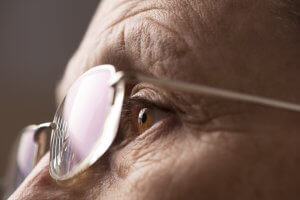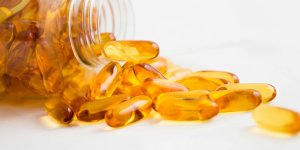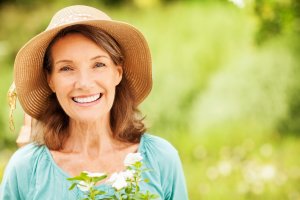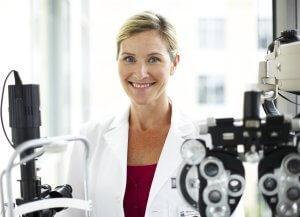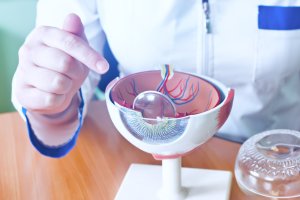Skin Rejuvenation
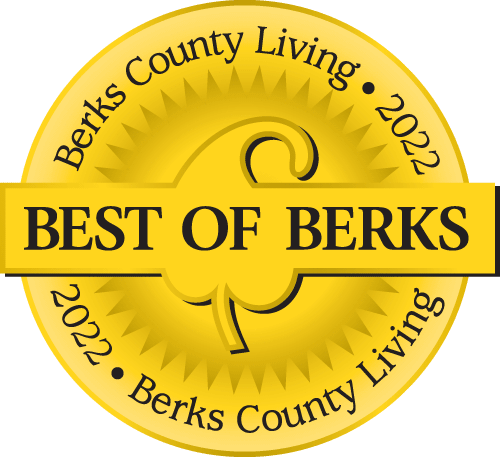
Voted Best of Berks—
eight years in a row!
Skin Aging
Smooth, soft skin conveys youthfulness. An even complexion without wrinkles or dark spots is seen as attractive, vibrant and energetic. Conversely, rough and sun-damaged skin is the first sign of age.
As infants, our skin is smooth, soft and uniform in color. As we age, our skin changes both from the passage of time and from environmental damage.
Natural aging, or chronologic aging, is most obvious in later life, when skin loses its elastic tone, develops fixed wrinkles, and takes on a yellowish color.
Most skin aging, particularly in those 35 -55 years old, is actually due to environmental factors. Ultraviolet sun exposure and smoking adversely affect skin tone, texture and color. This is most obvious when comparing the sun exposed skin on the upper chest to the protected skin on the breasts. You may also compare the skin on the back of your hands to the skin on your inner arm. The skin in these areas is the same age. However, sun damage causes the sun exposed areas to become rough and wrinkled. In addition, sun exposure causes freckles and mottled hyper pigmentation. In extreme cases, this can lead to skin cancer.
Prevention and Reversal of Skin Aging
The best way to prevent skin aging is to avoid exposure to ultraviolet light. Wearing a sunscreen at all times is necessary to prevent sun damage. Sunscreens should be applied to all exposed areas including the face, neck, chest and back of hands. Sunscreens should protect against both UV-A and UV-B light. Most sunscreens now incorporate two agents in order to protect against both kinds of UV light.
Smoking also leads to wrinkles and loss of skin elasticity. When you stop smoking you improve both your health and appearance.
Alphahydroxy acids, hydroquinone and tretinoins (Retin-A) are the only chemical agents proven to reverse the signs of skin aging.
Alphahydroxy Acid
Alphahydroxy acids (also called fruit acids) improve the skin by causing exfoliation of the upper layers of the skin. In addition, alphahydroxy acids (AHA) also thicken the dermis deeper in the skin to reduce fine lines and wrinkles. With the use of alphahydroxy acids you will notice smoother skin. You may also notice improvement in skin color and a reduction in fine wrinkles. Alphahydroxy acids are extremely effective at improving the complexion of those with acne or oily skin.
Alphahydroxy acids are available over the counter in such low concentrations that they are not that effective. We carry the Neostrata line of Alphahydroxy acid products which use an 8% or greater strength. This concentration is only available through a physician or aesthetician.
Those with dry skin may use polyhydroxy acids products, which are gentler. These products are also available from Neostrata.
Hydroquinone
Hydroquinone is a topical depigmenting agent that interferes with the production of new melanin pigment. Hydroquinone can dramatically improve uneven pigmentation due to photo damage as well as improve freckles. Hydroquinone works particularly well on pigmented scars.
Skin lightening is not immediate because hydroquinone only stops production of new pigment. The pigment that is already in the skin must be removed naturally by the body, which takes about two months. In addition, sunscreen must be applied when using hydroquinone and for six months afterwards to prevent the stimulation of new pigment production.
Hydroquinone must be applied properly. You should saturate the skin and rub the medication in until it is absorbed. Cover the entire treated area, not just the spots.
There have been rare cases of permanent spotty hyper pigmentation (ochronosis) or hypo pigmentation with the use of hydroquinone. This complication is almost only found in patients with very dark skin. Those with dark skin should use some caution and limit the duration of treatment. However, hydroquinone is very effective in smoothing irregular pigmentation in those with dark skin types.
Azelaic acid is another topical product used to even pigmentation. Azelaic acid is particularly useful in patients with acne and has been shown to be as effective in treating acne as topical antibiotics or benzoyl peroxide. Azelaic acid is available by prescription.
Other Pigmented Lesions
Hydroquinone is effective for superficial pigmentation and photo damage. However, some dark spots are not just due to aging but are caused by lesions which extend more deeply into the skin. A keratosis is a rough, wart-like growth which can become pigmentated. Keratosis may be treated with removal or chemical peels.
“Liver spots” usually extend deeper into the skin and will tend to recur after treatment with hydroquinone. Liver spots may be treated with formal skin peels.
Tretinoins
Tretinoin (Retin-A and Renova) has been scientifically proven to reverse skin aging and improve skin appearance. Tretinoin actually changes the microscopic structure of the skin, thickening the skin. Tretinoin improves blotchy hyper pigmentation and tightens the skin. The effects of tretinoin also last much longer than other products, lasting several months after stopping the medication.
However, tretinoin does not eliminate all wrinkles. In addition, tretinoin often causes some mild skin irritation and sun sensitivity. Because tretinoin increases blood flow to the skin it may be avoided in those with a significantly ruddy complexion.
Obagi
The Obagi system is available only through physicians. The Obagi system uses both hydroquinone and tretinoin. These products are combined with Dr. Obagi’s special formulations to increase their effectiveness. The system also includes a cleanser, an exfoliator and a sun-protection cream. Obagi can be your complete skin care system. While on the Obagi system, Dr. Goldberg will monitor your progress and adjust your treatment. Most patients start with an 18 week induction program. A maintenance program is then prescribed. Re-induction can be performed intermittently as needed.
Tretinoin can be used alone 20 minutes after washing the face. Tretinoin can also be mixed with the blender in the Obagi system for maximal benefit. Wait 30-60 minutes after applying AHA’s. Tretinoin is dabbed on the whole face and gently massaged into the skin. Avoid the sides of the mouth, eyelids, corners of the eyelids, and nose as these areas are more sensitive. The medication will seep toward the eyelids while you sleep gradually giving a lower concentration to the lids.
Tretinoin is applied at bedtime to reduce light sensitivity. However, if you still experience light sensitivity, you might try Adapalene, which is a retinoic acid that causes less photosensitivity.
For the first few weeks of treatment you may experience some redness and peeling. The Obagi system can be tailored to how rapidly you would like to see results. For faster results you usually must have a few weeks of skin redness. If redness and peeling are excessive, you can skip a day or use the modifier kit.
If using tretinoin without the Obagi system, new users starts with 0.025% cream nightly. If this strength is tolerated the concentration can be increased to 0.05% after the first tube is finished. Later, if needed, one can increase to the 0.1% concentration.
Renova is another formulation of tretinoin cream. Renova is better tolerated in those with dry skin. Renova is usually used at the 0.05% strength nightly 20-30 minutes after washing.
Patients who have “tough skin” can apply the tretinoin immediately after washing as the skin is more sensitive immediately after washing. You can also use the tretinoin with AHA’s to increase penetration. The effectiveness of tretinoin is also increased with the Obagi system.
If you use Tretinoin your skin may be more sensitive to irritants. Caution should be used with:
- Shaving
- Depilatories
- Facial waxing and electrolysis
- Facial masks
Antioxidants
Many antioxidants have been promoted to benefit skin appearance. Vitamin C, Vitamin E, copper, papaya and Coenzyme Q all have some laboratory evidence of benefit. These products are available in most drug stores.
Peels
Skin peeling rejuvenates the skin by removing the older surface layers. Medium and deep peels also stimulate collagen formation to thicken skin and improve wrinkles. There are various types of peels, classified by the depth and peeling agent. Deeper peels are more effective but cause greater down-time and carry more risks of scarring and hypo pigmentation.
Glycolic acid peels
A series of glycolic acid peels can help improve skin tone, reduce pore size, and improve superficial irregular pigmentation. Higher concentrations can help with fine wrinkles. There is no down-time. The peel is performed easily in the office.
Trichloracetic Acid Peels
Trichloracetic acid (TCA) peels can vary in depth depending on the concentration and technique of application. Trichloracetic acid peels improve irregular pigmentation and fine wrinkles. Multiple peels can be performed to improve deeper wrinkles. After a TCA treatment your skin will peel over a period of several days, giving a fresher, softer look. Dr. Goldberg performs the Obagi blue peel.
Deep Peels
A deep peel is used to reduce thicker, fixed wrinkles and more advanced aging changes. The effects are dramatic. A deep peel can be performed with laser or with the chemical phenol. Deep peeling usually requires sedation and should be performed by an experienced physician. Recovery can be prolonged.
Wrinkles
Nobody likes wrinkles. Wrinkles are often an early skin of aging. There are actually four types of wrinkles.
Fine wrinkles
Fine wrinkles are due to thinning of the superficial skin and often appear cross-hatched. The Obagi blue-peel is an effective treatment for these fine wrinkles.
Muscle-related wrinkles
Muscle-related wrinkles are caused by repetitive movements of facial muscles. These repetitive movements cause dents in the overlying skin. Forehead lines, crow’s feet and the vertical lines between the eyebrows (glabellar lines) are all muscle-related. Botox can be very effective in reduce or eliminated these wrinkles. When the folds become fixed several Botox treatments may be needed to smooth these dents in the skin. Fixed folds can also be treated with wire-dissection of the folds. This procedure is easily performed in the office.
Folds
Folds are due to downward sagging of the skin due to gravity and loss of underlying soft tissue. The indentation next to the fold can be filled with various fillers just as Restylene or your own fat. Surgery may also be beneficial.
Accordion pleat wrinkles
Accordion pleat wrinkles tend to occur on the sides of the cheek. Pleat wrinkles are due to loss of skin elasticity and atrophy of deeper tissue.
Regular treatment can help prevent and reverse skin aging. It is important to use products consistently. Sun protection and smoking cessation are essential. You and your doctor should decide together what treatment would best suit your needs.
Not every condition is listed. Consult Dr. Goldberg if you have any questions about a condition not described here.
Find a Doctor
Physician information including education, training, practice location and more.
Schedule an Appointment
Call 800-762-7132 or make an appointment online.
